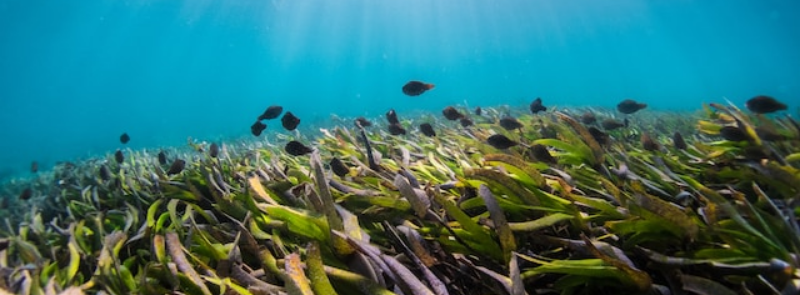
When It Occurs
Every March 1st
Official Website
Timeline
Days Passed (1034)
# Hashtags
#WorldSeagrassDay #MarinePlants
World Seagrass Day is an annual celebration on March 1st, dedicated to raising awareness about the crucial role of seagrasses in the marine ecosystem. The declaration of World Seagrass Day by the United Nations General Assembly in 2022 followed Sri Lanka's resolution, emphasizing the need for seagrass conservation.
Seagrasses, unique flowering plants thriving in marine environments, serve as essential food sources for various marine life, from small invertebrates to larger creatures like fish, turtles, manatees, and even certain sharks. Unfortunately, human activities pose a significant threat to seagrasses, with coastal development, pollution, climate change, dredging, and unregulated fishing and boating activities being primary contributors to their degradation. Along coastal regions, up to 67 species (93%) of seagrasses are impacted by human activity.
Origin and History
- Establishment: The idea for World Seagrass Day was first proposed by the Government of Indonesia to the United Nations. In May 2022, the UN General Assembly adopted the resolution, officially recognizing March 1st as World Seagrass Day.
- First Observance: The inaugural World Seagrass Day was celebrated on March 1, 2023.
Significance
- Environmental Importance: Seagrasses are essential to marine ecosystems, providing habitat, food, and nursery grounds for many marine species. They play a crucial role in maintaining water quality, preventing coastal erosion, and storing carbon, which helps combat climate change.
- Biodiversity: Seagrass meadows support a high level of biodiversity, including fish, crustaceans, and marine mammals. They are vital for the survival of species such as sea turtles and dugongs.
- Economic Value: Seagrasses contribute to the livelihoods of millions of people by supporting fisheries, tourism, and protecting shorelines from storm surges.
Activities and Celebrations
Educational Programs
- Workshops and Seminars: Educational workshops and seminars focus on the importance of seagrass ecosystems, their benefits, and the threats they face.
- School Programs: Schools may organize special programs, projects, and field trips to coastal areas to learn about seagrass and its ecological significance.
Awareness Campaigns
- Social Media: Use of hashtags like #WorldSeagrassDay to share information, photos, and videos about seagrass ecosystems and conservation efforts.
- Public Talks and Exhibitions: Marine biologists and conservationists give talks and present exhibitions to educate the public about seagrass and its role in marine health.
Conservation Activities
- Seagrass Restoration Projects: Community-led initiatives to restore damaged or degraded seagrass meadows through planting and habitat restoration.
- Beach Clean-ups: Organizing clean-ups to remove debris and pollutants from coastal areas to protect seagrass habitats.
Research and Advocacy
- Scientific Research: Promoting and conducting research to understand seagrass ecosystems better and develop effective conservation strategies.
- Policy Advocacy: Advocacy for policies and regulations to protect seagrass meadows from destructive activities such as coastal development, pollution, and unsustainable fishing practices.
Challenges Faced by Seagrass Ecosystems
- Coastal Development: Construction and development along coastlines can lead to habitat destruction and degradation of seagrass meadows.
- Pollution: Runoff from agriculture, industrial activities, and sewage can introduce harmful substances into coastal waters, negatively impacting seagrass health.
- Climate Change: Rising sea temperatures, ocean acidification, and extreme weather events due to climate change pose significant threats to seagrass ecosystems.
- Unsustainable Fishing Practices: Practices such as trawling can damage seagrass beds and disrupt the marine life that depends on them.
Importance of Seagrass
Ecological Benefits
- Habitat and Nursery: Seagrasses provide habitat and nursery grounds for a variety of marine species, supporting fisheries and biodiversity.
- Water Quality: Seagrasses help maintain water clarity and quality by trapping sediments and nutrients.
- Carbon Sequestration: Seagrass meadows are effective carbon sinks, sequestering significant amounts of carbon dioxide and helping mitigate climate change.
Economic Benefits
- Fisheries: Seagrass meadows support commercial and recreational fisheries by providing essential habitat for fish and shellfish.
- Tourism: Healthy seagrass ecosystems attract tourists, supporting local economies through activities such as snorkeling, diving, and wildlife observation.
- Coastal Protection: Seagrasses help protect coastlines from erosion and storm surges, reducing the need for costly artificial defenses.
How to Get Involved
- Participate in Events: Join local or virtual events celebrating World Seagrass Day to learn more and contribute to conservation efforts.
- Support Conservation Organizations: Donate to or volunteer with organizations dedicated to the protection and restoration of seagrass ecosystems.
- Raise Awareness: Use social media and other platforms to share information about the importance of seagrass and the threats they face.
- Advocate for Policy Changes: Support policies and initiatives that protect coastal and marine environments, including seagrass meadows.
- Reduce Pollution: Take steps to reduce pollution in your community, such as proper waste disposal, reducing the use of harmful chemicals, and supporting clean water initiatives.
Conclusion
World Seagrass Day is a vital observance that highlights the critical role of seagrass in maintaining healthy marine ecosystems and supporting human livelihoods. Through education, conservation efforts, and advocacy, this day aims to protect and restore seagrass meadows, ensuring their continued benefits for future generations. By participating in events, supporting conservation initiatives, and raising awareness, everyone can contribute to the preservation of these essential marine habitats.


